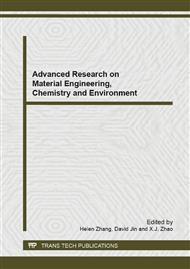p.498
p.502
p.508
p.511
p.516
p.521
p.525
p.530
p.534
The Seismic Performance Analysis of Brick Masonry Wall between Windows with the Isolation Seam
Abstract:
The wall between windows is the smallest,the most weakest anti-seisnic unit[. Under the action of a strong earthquake,the longitudinal window that parallel to the main direction,often produced Xshaped cracks due to lack of shear bearing capacity .But under the earthquake,masonry structure had goodsecsmic performance,large ductility,light damage and showed reversible,easy to repair[ and so on. Given the advantages of bending failure of the above, Professor Zhang Wenfang has proposed a new earthquake mitigation technologies in the literature [. This model avoids the whole cross-section brittle shear slip, and has good ductility after yielding. Therefore, this paper combines the free shear failure of masonry structures seismic test specimen design. And it can simulate the window wall W-1 with 10mm isolated seam,the wall W-2 between windows and the ordinary wall W-3.Compared their damage morphology and mechanical characteristics in the vertical load and horizontal loads, some useful can be got and become the basis for teoretical analysis and engineer design of masonry structures for the future.
Info:
Periodical:
Pages:
516-520
Citation:
Online since:
September 2013
Authors:
Price:
Сopyright:
© 2013 Trans Tech Publications Ltd. All Rights Reserved
Share:
Citation:


